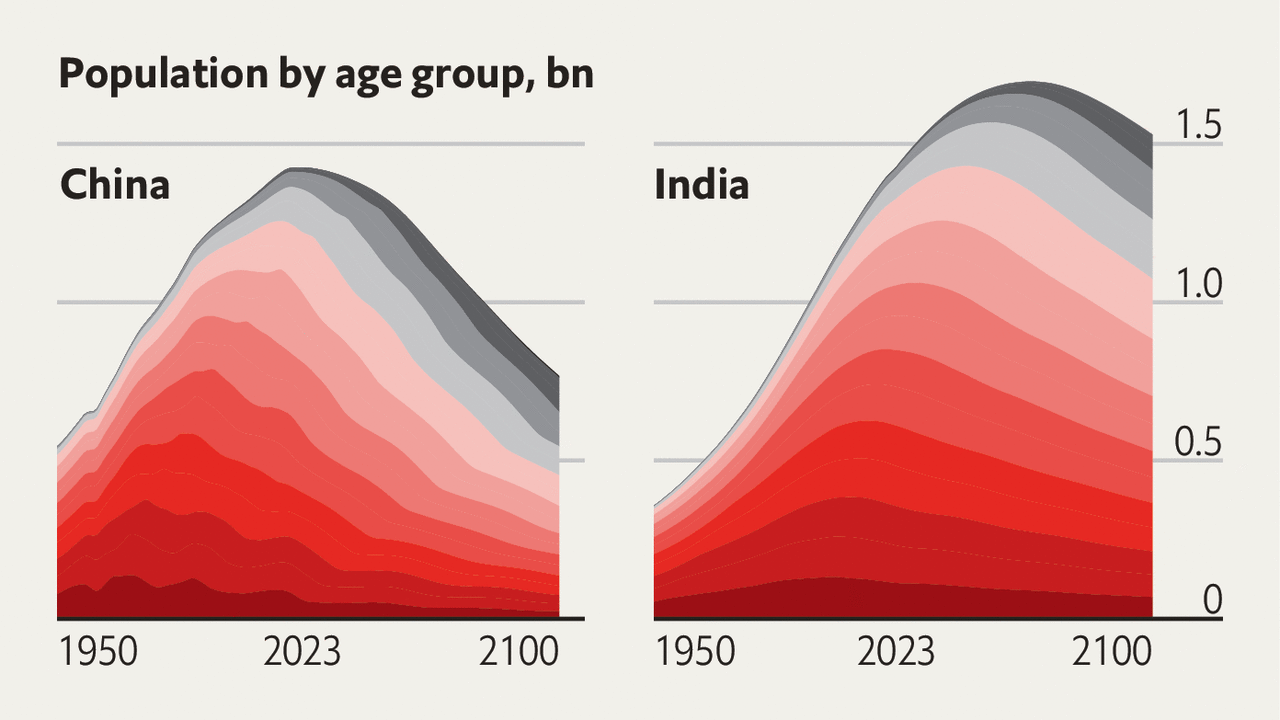The global population pecking order is about to shift. India is expected to overtake China as the world’s most populous country in April. This landmark is indicative of trends that will have far-reaching economic and social consequences for both countries. Since 1950, India and China have accounted for 35% of global population growth. However, China’s strict family planning rules—the so-called one-child policy implemented in 1980—dramatically reduced the country’s birth rate. Its population is now on the verge of dwindling. Even though the Communist Party allows women to have three children, they only have 1.2 on average. China’s population will be 8% lower by 2050 than it is now. Meanwhile, India’s population will continue to grow. It is expected to reach 1.7 billion in 2064 when it will be nearly half the size of China’s (see chart). Between now and 2050, India is expected to provide more than a sixth of the increase in the world’s working-age population (15-64-year-olds). According to the State Bank of India, it recently surpassed Britain as the fifth-largest economy in the world and will take third place by 2029.
Referring to an earlier World Health Organization report that estimated approximately 14.9 million deaths from the Covid-19 pandemic between January 2020 and December 2021, the UN report stated that global life expectancy at birth fell to 71 years in 2021 from 72.8 years in 2019, owing primarily to the pandemic.
According to the United Nations, eight countries will account for more than half of the projected increase in global population between now and 2050: the Democratic Republic of the Congo, Egypt, Ethiopia, India, Nigeria, Pakistan, the Philippines, and Tanzania. Sub-Saharan African countries are expected to contribute more than half of the projected increase through 2050.
However, the population of 61 countries is expected to fall by 1% or more between 2022 and 2050, owing to a decline in birth rates.















